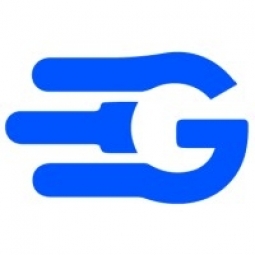Download PDF
Mega WeCare Enhances Efficiency and Reduces Costs through RFQ Management Automation
Applicable Industries
- Pharmaceuticals
- Transportation
Applicable Functions
- Logistics & Transportation
- Procurement
Use Cases
- Inventory Management
- Leasing Finance Automation
Services
- System Integration
The Challenge
Mega WeCare, a global pharmaceutical and nutraceutical products manufacturer, was facing several challenges in its logistics operations. The company had a limited vendor pool, which restricted the number of negotiations for each shipment, leading to higher shipping costs. The traditional method of negotiating deals via calls and emails was hampering the productivity and overall efficiency of its logistics team. Many of the company's shipments were contract-based, preventing them from leveraging competitive rates throughout the year. Additionally, the annual contract prices included buffers and contingent costs, resulting in additional expenses for the company. The manual creation of reports led to inefficient data analysis and unclear insights, further complicating the situation.
About The Customer
Mega WeCare is a public company limited, established in 1982. The company is engaged in manufacturing, marketing, selling, and distributing quality pharmaceutical and nutraceutical products on a global scale. With a presence in 31 countries, Mega WeCare exports its products to various regions including Asia-Pacific, Middle East, Africa, CIS-Countries, Latin America, and Europe. Despite its global reach, the company was facing challenges in its logistics operations due to a limited vendor pool and inefficient negotiation processes.
The Solution
Mega WeCare adopted GoComet’s GoProcure RFQ Management module to automate its freight negotiation process. This solution led to a 180% increase in their engagement with vendors, resulting in more negotiations and significant cost savings. GoComet’s Compounded Negotiation system ensured that each vendor competed with every other vendor to offer the most competitive deals. The vendor pool increased to 14 vendors, leading to better rates and more negotiations. The company also benefited from vendor performance analytics provided by the system. The GoProcure module's ability to record every interaction in the bidding process resulted in transparent, audit-ready procurement. Additionally, the system automatically generated reports based on the recorded data points, enabling more innovative, quicker, and data-driven decision making.
Operational Impact
Quantitative Benefit
Related Case Studies.

Case Study
Case Study: Pfizer
Pfizer’s high-performance computing software and systems for worldwide research and development support large-scale data analysis, research projects, clinical analytics, and modeling. Pfizer’s computing services are used across the spectrum of research and development efforts, from the deep biological understanding of disease to the design of safe, efficacious therapeutic agents.

Case Study
Airport SCADA Systems Improve Service Levels
Modern airports are one of the busiest environments on Earth and rely on process automation equipment to ensure service operators achieve their KPIs. Increasingly airport SCADA systems are being used to control all aspects of the operation and associated facilities. This is because unplanned system downtime can cost dearly, both in terms of reduced revenues and the associated loss of customer satisfaction due to inevitable travel inconvenience and disruption.

Case Study
IoT-based Fleet Intelligence Innovation
Speed to market is precious for DRVR, a rapidly growing start-up company. With a business model dependent on reliable mobile data, managers were spending their lives trying to negotiate data roaming deals with mobile network operators in different countries. And, even then, service quality was a constant concern.

Case Study
Digitize Railway with Deutsche Bahn
To reduce maintenance costs and delay-causing failures for Deutsche Bahn. They need manual measurements by a position measurement system based on custom-made MEMS sensor clusters, which allow autonomous and continuous monitoring with wireless data transmission and long battery. They were looking for data pre-processing solution in the sensor and machine learning algorithms in the cloud so as to detect critical wear.

Case Study
Cold Chain Transportation and Refrigerated Fleet Management System
1) Create a digital connected transportation solution to retrofit cold chain trailers with real-time tracking and controls. 2) Prevent multi-million dollar losses due to theft or spoilage. 3) Deliver a digital chain-of-custody solution for door to door load monitoring and security. 4) Provide a trusted multi-fleet solution in a single application with granular data and access controls.

Case Study
Vehicle Fleet Analytics
Organizations frequently implement a maintenance strategy for their fleets of vehicles using a combination of time and usage based maintenance schedules. While effective as a whole, time and usage based schedules do not take into account driving patterns, environmental factors, and sensors currently deployed within the vehicle measuring crank voltage, ignition voltage, and acceleration, all of which have a significant influence on the overall health of the vehicle.In a typical fleet, a large percentage of road calls are related to electrical failure, with battery failure being a common cause. Battery failures result in unmet service agreement levels and costly re-adjustment of scheduled to provide replacement vehicles. To reduce the impact of unplanned maintenance, the transportation logistics company was interested in a trial of C3 Vehicle Fleet Analytics.





